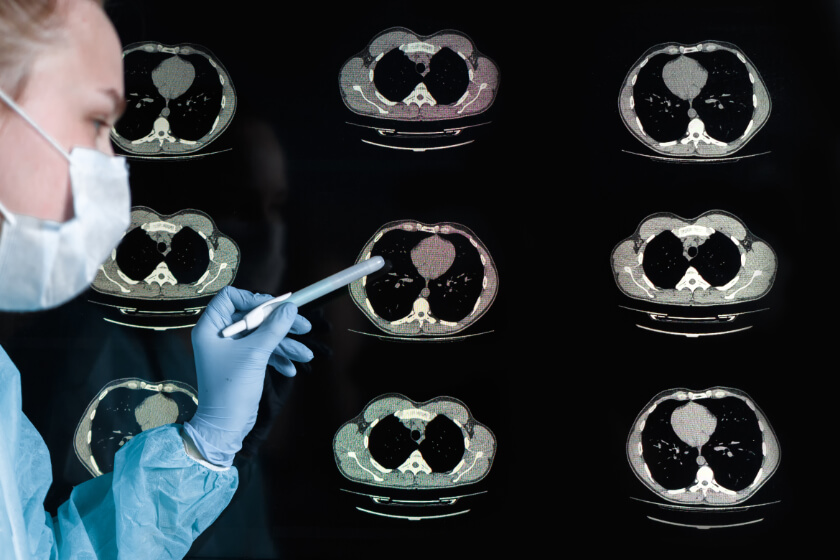
Radiology Preparedness for COVID-19 – Changing the Radiology Department to Improve Overall Care

Coronavirus disease (COVID-19) – and the fight to control it – has continued to change since it emerged. The disease started out affecting mostly older adults, for example, but younger people are now coming down with it. Medical scientists and doctors are searching for new ways to diagnose and treat COVID-19 too. In its earliest days at the end of 2019 and beginning of 2020, doctors were exploring the use of computed tomography (CT) scans to diagnose.
Today, radiology departments are focusing on preparedness. In general, radiology preparedness means radiology departments are making sure they have the capacity to operate smoothly during the COVID-19 outbreak and other health emergencies of unprecedented proportions while continuing to provide radiology services for the other patients without COVID-19.
A panel of experts on radiology preparedness during the COVID-19 pandemic met recently to discuss ways radiology departments could prepare for large-scale health emergencies. The journal Radiology published their findings, which outline priorities for handling COVID-19 cases. The report also suggests strategies radiology departments could use to contain the spread of infection to protect staff and other patients.
The Spread of COVID-19 and the Responses to the Pandemic
COVID-19 has swept through more than 200 countries and territories, sickening millions and killing tens of thousands of people. Each country and territory has dealt with COVID-19 in its own way, and with varying results.
China created special hospitals for patients with COVID-19 and implemented strict social isolation and aggressive quarantining methods to keep the number of coronavirus infections at manageable levels in other hospitals. Cases increased exponentially in Italy for quite some time; their approach of hospitalizing everyone ill with COVID-19 overburdened their hospital systems. Iran’s system was not prepared to handle the surge in COVID-19 cases.
As coronavirus spread from one region of the world, other countries have had about two months to prepare for the coronavirus pandemic and decide how they will diagnose and treat the disease before it reaches their area. Doctors initially used CT scans to diagnose COVID-19, for example, but now they do a test that uses a nasopharyngeal swab to collect a specimen from the back of a patient’s throat or nose. Switching from CT scans to swabs frees up the radiology department to shift their focus to preparedness.
Radiology Preparedness
To ensure the smooth operation of the radiology department during the height of the pandemic, each department should prepare ahead of time – long before anyone in the area tests positive for the disease.
First, the radiology departments should review their policies and procedures to ensure the department has the capacity to operate smoothly despite having an unprecedented number of patients, and that it has what it needs to support the care of patients with COVID-19. Second, the radiology departments must also be able to provide the other radiology services they normally offer to patients who do not have coronavirus disease.
Because every country and community has different infection control policies in place, the individual steps for radiology preparedness for coronavirus will vary between clinics, hospitals, and institutions. To help them determine the best steps for radiology preparedness, the Radiology Editorial Board assembled a team of radiologists who have active experience in coordinating, developing, and implementing radiology preparedness plans for COVID-19. The team members come from institutions and healthcare systems in Washington, New York, Georgia, California, Wisconsin and Singapore, and they each have developed radiology preparedness policies in their own institutions and healthcare systems.
The article gives each panel member a chance to describe their department’s top priorities for coronavirus preparedness in their institutions, and to describe the steps their institutions took to address these priorities. The authors of the article hoped the readers could find similarities between the panel members’ descriptions and the challenges their own healthcare systems face when it comes to preparedness.
While each healthcare system has its own priorities when it came to COVID-preparedness, but priorities typically focus on early detection, limiting the exposure of others to the virus, safety precautions, stringent cleaning protocols, and training, along with staffing and maintenance operations.
Western Washington State was the first epicenter of the COVID-19 outbreak in the United States. Hospitals at the University of Washington Medicine began screening people at the entrance of the hospitals, checking for symptoms of coronavirus infections, exposure to the virus, or travel to areas with an active virus outbreak. They also used the radiology front desk as an additional screening site.
After the COVID-19 pandemic ends, radiology departments must continue planning and preparing for future pandemics and catastrophic emergencies. Officials at Singapore General Hospital began to consider long-range planning for COVID-19 and other disasters the new norm for their radiology departments.
“We are re-thinking how radiology can deliver optimal imaging and treatment while reducing unnecessary movement and congregation of patients within our hospital environment,” said Bien Soo Tan, M.D., chair of the Division of Radiological Sciences at Singapore General Hospital in a press release. Other radiology departments and clinics are also re-thinking their radiology preparedness in the wake of the COVID-19 pandemic.




